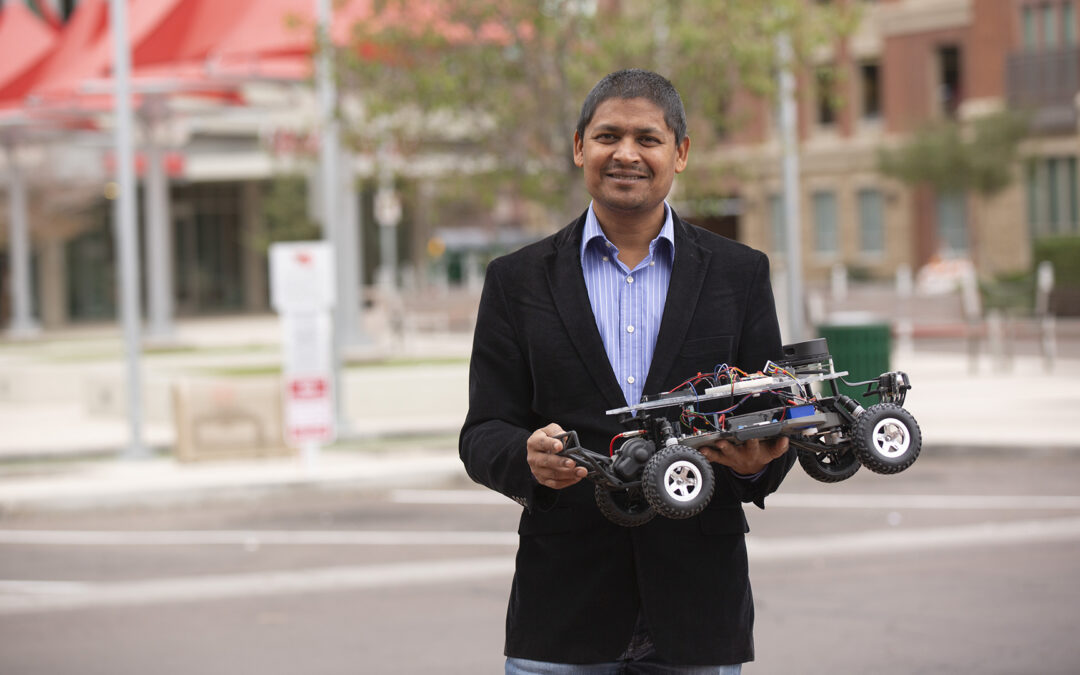Lightning McQueen saves Radiator Springs. KITT from Knight Rider wooshes up the road with David Hasselhoff in the driver’s seat. Optimus Prime and his crew of Transformers keep on trucking.
The idea of a talking car — a friend who literally picks you up — looms large in the popular imagination.
Now, Aviral Shrivastava, a professor of computer science and engineering in the Ira A. Fulton Schools of Engineering at Arizona State University, has come up with a plan to help cars communicate — but there’s a catch.
The cars will only talk to each other.
Shrivastava, a faculty member in the School of Computing and Augmented Intelligence, part of the Fulton Schools, and his team of researchers in ASU’s Make Programming Simple Lab, have been studying how to use state-of-the-art programming techniques to help autonomous vehicles, also known as self-driving cars, collect data and share the information they gather. The team, which includes computer science doctoral student Edward Andert and computer science graduate student Francis Mendoza, began with a couple of simple questions: What if your car could see every other car on the road? And what if it could use the information it gathers about driving conditions to help other cars make better safety decisions?
“When cars drive, they need to find paths that are clear and free from obstructions,” Shrivastava says. “If there is a car driving in a lane next to you, you can only see that car. But the driver of the other car can see things you cannot. When autonomous cars share data, they can solve basic safety problems.”
Most cars on the road today can transmit some forms of data. Automotive navigation systems are increasingly common and car manufacturers have created products like OnStar from General Motors that can access and send information such as vehicle speed, seat belt use and crash data to first responders in case of an emergency.
Plus, engineers are also helping autonomous vehicles learn. Yezhou “YZ” Yang, a Fulton Schools associate professor of computer science and engineering, is at the forefront of the development of artificial intelligence systems systems for self-driving cars. His work in active perception involves the development of algorithms that collect and analyze complex datasets from vehicle sensors to help the cars make safer and more intelligent decisions while on the road.
Read the full story on Full Circle.
